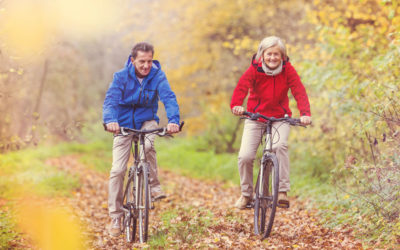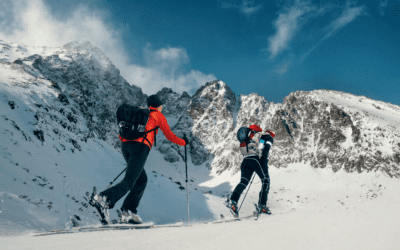Lack of physical activities i.e. sedentary lifestyle directly correlates to poor health and aging. Physical activity doesn’t necessarily mean sports and such, it can also be various leisure activities, travel, household chores, playful activities, and more. Almost 30% of the world’s population is considered sedentary which is connected to the way we live our lives nowadays. There are motorized vehicles everywhere that come in all shapes and sizes. There’s even no need for going to shops as everything is just available to order online. Physical activity reduces the risk of high blood pressure, cancer, cardiovascular disease, stroke, diabetes. Not only that, it’s improving bone and muscle health, as well as endurance, prolonging our life along the way.
In order to learn more about this, keep reading the article from Dr. Pierre-Olivier Lang.
WHAT IS PHYSICAL ACTIVITY?
Physical activity is defined as any movement produced by the skeletal muscles, responsible for a significant increase in energy expenditure. It is therefore not limited to only sports activities and also includes leisure activities (gardening or DIY), travel (on foot or by bicycle), professional activities, household chores, playful activities of daily life. (family, professional, community).
Sedentary lifestyle or lack of physical activity is considered a major factor impaired health. Nearly five million deaths are directly in connection with a sedentary life just like 25% of breast or colon cancers, 27% of diabetes and 30% of coronary artery disease. Almost 30% of the world’s population is considered sedentary, and the elderly are overwhelmingly represented! This observation is directly related to the way of life in our modern societies. where everyone has a motorized vehicle and everything is just a click away.
WHAT ARE THE HEALTH BENEFITS TO BE EXPECTED?
It is currently well recognized that the regular and adapted practice of activity physical and/or sporting has many health benefits. Risk reduction high blood pressure, cardiovascular disease, stroke, diabetes, breast cancer, and colon cancer are some obvious examples. Physical activity also improves bone and muscle health, as well as endurance.
WHY TALK ABOUT PHYSICAL ACTIVITY AMONG SENIORS?
Aging is intrinsically associated with a decrease in muscle mass and performance. While the exact origin is still poorly known, the loss of mass muscle seems to be linked to an alteration of protein synthesis processes. Fiber muscles are then replaced by fatty tissue. Muscle fatigue is following deeper modifications in the cells and in particular in the muscle energy generators (mitochondria).
These upheavals in the motor system are not without consequence. They help to increase reaction time and decrease the speed of muscle contraction. Compared to a younger subject, for example, seniors have more difficulty in exerting adequate force and therefore reacting to postural disturbances. Combined with the effects of aging on the sensory system, this increases very significantly the risk of losing balance and therefore falling. Regular and adapted exercise is a good way to limit muscular atrophy and fatigue. Strength exercises and endurance promote muscle protein synthesis and optimize production energy from the mitochondria.
THE KNOWN BENEFITS FOR SENIORS?
Quite recently, researchers have focused more specifically on this question. They all came to the conclusion that there is no age limit to (re)start to be active while keeping in mind that the activity should be adapted to the condition health and functional abilities.
REDUCED MORTALITY
The benefit in terms of reduced mortality is reported by all studies carried out in people 70 years of age or older. Among them, the Jerusalem Longitudinal Cohort Study showed in comparison to sedentary, a reduction in mortality from 27 to 15% after 70 years, from 41 to 26% after 78 years, and from 24 to 6% among 85+ in those who practice endurance-type physical activity. The Physician’s Health Study concluded that the 20-year life expectancy of an active 72-year-old man was increased compared to that of a sedentary of the same age. These results of course raise the question of optimal intensity. According to the authors, the benefit appears from the practice of activity even at low intensity. The “intensity-benefit” relationship is not, however, linear and intensity too high or inadequate does not always provide additional benefits. If the intensity is important, it is above all the total energy expenditure or the volume of activity (intensity × duration × frequency) that must be considered. It is measured in MET (Metabolic Equivalent Task). Table 1 shows the level of intensity of different types of activity.

REDUCTION OF CARDIOVASCULAR DISEASE
This benefit results in particular from the improvement of blood circulation in the coronary arteries and heart muscle. Physical activity is also recognized as an effective means of prevention. In seniors ≥80 years followed over 15 years, an endurance activity of 2 sessions/week reduced coronary events. The Honolulu Heart Program confirmed this effect from low-intensity activity. The occurrence of coronary events was reduced by 20% in walkers (≥ 2.5 km/day).
CONTROL OF HIGH BLOOD PRESSURE
A sedentary lifestyle is a major risk factor for high blood pressure. All of the available data is consistent for the benefit of physical activity and in particular endurance type on his control. This effect is also the result of a combination of factor complexes (endothelial function, neurohormonal modulation). In one study, endurance-type physical activity lowered the blood pressure of hypertensive seniors by 10%. While the effect may seem minimal, not only is this effect equivalent to that measured with certain antihypertensive treatments. In addition, a decrease of 3 mmHg in blood pressure is associated with a reduced risk of stroke 14%, heart attack 9%, and overall mortality 4%.
REDUCTION OF CEREBROVASCULAR DISEASE
This effect is explained by the better control of vascular risk factors, the improvement of functional health and endurance capacities, and also the production of neurogenic growth factors. A longitudinal study with training intermittent over 6 weeks not only improved recovery in patients with had a stroke but also reported a decrease in accidents so-called silent vascular systems. A “dose-response” relationship was measured where the intensity activity high (≥5 hours/week) decreased the risk of stroke more than an activity of low to moderate intensity (<5 hours/week).
IMPROVED GLUCOSE METABOLISM AND REDUCED RISK FOR DIABETES
Better blood sugar control appears from the first session of physical activity. A moderate-intensity session reduces postprandial hyperglycemia and this by recruitment of muscle glucose transporters. The effect in particular on glycogen depletion and the reduction in the storage of intramuscular lipids explain the medium and long-term effects. Recovery of insulin sensitivity is also observed with the accumulation of sessions via a decrease in fat mass and an increase in muscle mass. In the elderly, it has been clearly shown a decrease in fasting insulin levels of around 30% and an increase in sensitivity insulin. These results were observed after 24 weeks of endurance activity in comparison to stretching and yoga sessions.
REDUCTION OF HYPERCHOLESTEROLEMIA
Changes in plasma lipid composition during aging expose seniors to cardiovascular, neurovascular, and metabolic complications. Increases in triglyceride levels, total cholesterol, LDL-cholesterol (bad cholesterol), and the decrease in HDL-cholesterol (good cholesterol) leads to an unfavorable lipid profile for health. The majority of studies have shown a decrease in LDL-cholesterol and triglycerides combined with an increase in HDL-cholesterol. These benefits must be part of a cardio risk reduction strategy and absolute neurovascular by considering the cumulative benefits of physical activity on all the risk factors presented above.
BODY COMPOSITION
The composition of our body changes with aging with an increase in fat mass and a reduction in lean mass. This can happen without modification of our body weight and body mass index (BMI = weight / height2 ). Many studies have shown a benefit of physical activity on body composition with a decrease in total weight, fat mass without however a very significant benefit on lean mass. The latter, however, no longer decreased in seniors in good health. Other studies have reported a decrease in BMI and waist circumference testifying then to the replacement of fat mass by lean mass.
ENDURANCE CAPACITIES
Endurance capacity is an excellent marker of general health, but also the functional capacities of a person but also their survival. This ability is measured by the maximum oxygen consumption or VO2max which corresponds to a maximum volume of oxygen that an individual can consume per unit of time, especially during maximum aerobic dynamic exercise. It is expressed in liters per minute (L / min). In a young and healthy subject, VO2max is observed in the order of 45 mL/min/kg in men and 35 mL/min/kg in women. On the other hand, a VO2max lower than 15- 18 mL/kg/min significantly compromises functionality and this value was retained by the US Social Security Administration as the threshold for loss of independence functional. Indeed, there is a relationship between VO2max and the level of intensity that an individual can tolerate (3.5 mL/kg/minute of VO2max = 1 MET). So the more the VO2max is high, the more a person is able to support high-intensity activities (table 1). The benefit of physical activity on the VO2max of seniors is well demonstrated and all the studies agree even in very old people and/or with heart failure. In sedentary seniors (70+), it has been shown that after 9 weeks of re-training, they found an endurance capacity similar to that 60-year-old sedentary!
MUSCLE STRENGTH
From the age of 50, our muscle mass is reduced to reach a deficit of 25% at 65. These modifications clearly visualized in figure 2 are however potentially reversible with physical activity. For example, a program on an ergo cycle of 12 weeks in older women increased power (+ 12%), quadriceps strength (+ 20%), and quadriceps volume (12%). These results were confirmed at upper and lower limbs in healthy sedentary patients, patients with knee osteoarthritis, and others with chronic obstructive pulmonary disease.
FUNCTIONAL CAPACITIES
While the level of overall functional performance deteriorates with aging, this is also reversible with regular physical activity. The latter appears to be a fundamental element in the prevention of functional decline. Its impact on people 70+ is already observed after a short period of training, especially on balance performance. With more prolonged activities (45 sessions of 30 minutes of walking), an increase in walking speed and distance was measured. This has been observed in sedentary people and also in patients with knee osteoarthritis and even with chronic arterial disease of the lower limbs.
LIFE QUALITY
The effects of physical activity are not limited to physical health and also concern psychic and mental health. A more active life contributes to well-being, to improve self-esteem and quality of life. Physical activity promotes brain level production of endorphins, serotonin, dopamine, oxytocin, but also norepinephrine and the synthesis of many neurogenic growth factors that protect and regenerate neurons. This has been demonstrated in both healthy seniors’ health than in those suffering from chronic respiratory and/or cardiac conditions and of people with cancer.
RECENTLY DEMONSTRATED BENEFITS
Cancer prevention
Recent evidence suggests that the accumulation of physical activity sessions and particularly high-intensity endurance type is associated with reduced risk of certain cancers. This would be explained by the beneficial effects on weight, decrease in abdominal adiposity, increase in insulin sensitivity, better regulation of certain growth factors, and immunity. It was thus found a decrease in the rate of prostate cancer in those exercising> 120 METhour (vs. <40 MET-hour). Another study reported that walking (5 × 30 min/week for 6 weeks) decreased fatigue by 19%, and joint pain and stiffness by 10 and 23% in women undergoing treatment for breast cancer. In colon cancer, 150 min/week of physical activity improved quality of life. This effect was also observed in bladder cancer. Larger studies reported improved survival in patients with colon cancer.
Cognitive abilities
The more physical activity you practice, the less risk you would be of developing a disease Alzheimer’s! This protective effect is linked to better control of cardio and neurovascular risk factors, to a neurotrophic effect, as well as to the maintenance of social ties. and better psychic and mental health. The vast majority of studies agree towards an improvement in overall and specific performance. In prevention, 3×60 min of physical activity/week over 12 weeks reduced the number of errors in the Wisconsin card sorting test in comparison to stretching exercises. A program of walking over 4 weeks improved the performance of certain executive functions.
WHAT REMAINS TO BE CONFIRMED
The benefit of physical activity on bone mineral density (BMD), falls, and the risk of fracture is still debated. Some authors suggest a relation in “U” between intensity and risk of fractures and falls.
Bone mineralization
If physical activity contributes to increasing bone mineral density through stress mechanical, this phenomenon deteriorates rapidly with aging. Few studies have specifically considered seniors and the results are contradictory. The race walking at moderate intensity is associated with higher bone mineralization than in swimmers or sedentary people. A large study found a dose-response relationship between physical activity and mineralization in the neck of the femur in women aged 75 or over.
The risk of fractures and falls
The relationship between exercise and fracture risk is complex. His assessment is made difficult by the many risk factors most often entangled in the elderly (gait disturbances, balance problems, reduction in reaction, visual and cognitive deficits, decrease in muscle strength, sarcopenia, polypharmacy). In women engaged in moderate to vigorous activity, the risk of hip and spine fracture was decreased by 42 and 33%, respectively. Even recently practiced, physical activity would be beneficial for seniors who would exercise at least 3 hours/week. To prevent falls, practice multimodal activities (combination of endurance and muscle building, for example) would be more beneficial. But even isolated endurance activity would already be beneficial.
IN PRACTICE: WHAT TO DO?
For those 55+, at least 150 minutes of intensity endurance activity moderate / week or 75 minutes of sustained intensity endurance activity is recommended. This activity should be done in periods of at least 10 minutes. To be able to derive additional benefits, the duration of moderate-intensity activity should be gradually increased to reach 300 minutes/week or 150 minutes if the intensity is sustained.
It is important to keep in mind that there is, a priori, no contraindication to engaging in physical activity as long as it is appropriate. Physical activities integrated into daily life (walking or cycling, household activities, gardening) provide a foundation that can be supplemented with activities that demand endurance, strength, and balance. If the fear of aggravating a pathology is often mentioned as a fear, apart from the exacerbation phases, no chronic pathology does not contraindicate moderate-intensity activity. However, it is imperative to make prior to a health check-up if higher intensity activity is desired.


For people with reduced mobility, the choice of activity should first aim to improve balance and prevent falls (3x / week). Strengthening exercises targeting major muscle groups should also be practiced (2x / week). When people cannot practice the recommended amount because of their state of health, they should then be as active as their capacity and state of health allow them.
CONCLUSION
Physical activity is an important determinant of the health of seniors and whatever or their age and state of health. It helps to break the vicious circle that binds sedentary lifestyle and the incidence of chronic diseases, thus contributing to the aging quality and healthier.










